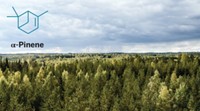Advertisement
Grab your lab coat. Let's get started
Welcome!
Welcome!
Create an account below to get 6 C&EN articles per month, receive newsletters and more - all free.
It seems this is your first time logging in online. Please enter the following information to continue.
As an ACS member you automatically get access to this site. All we need is few more details to create your reading experience.
Not you? Sign in with a different account.
Not you? Sign in with a different account.
ERROR 1
ERROR 1
ERROR 2
ERROR 2
ERROR 2
ERROR 2
ERROR 2
Password and Confirm password must match.
If you have an ACS member number, please enter it here so we can link this account to your membership. (optional)
ERROR 2
ACS values your privacy. By submitting your information, you are gaining access to C&EN and subscribing to our weekly newsletter. We use the information you provide to make your reading experience better, and we will never sell your data to third party members.
Environment
Droplets From Mold May Seed Rain Forest Aerosols
Atmospheric particles arise from postassium-rich emissions from flora and fauna
by Jyllian Kemsley
September 3, 2012
| A version of this story appeared in
Volume 90, Issue 36
Organic aerosol particles that form in the air above the Amazon rain forest likely arise from potassium-rich droplets emitted from rain forest flora and fauna, especially molds (Science, DOI: 10.1126/science.1223264). So-called secondary organic aerosols form from oxidation of airborne organic gases and play key roles in weather and climate by seeding clouds and absorbing or scattering sunlight, but their origin and properties are poorly understood. A research group led by Christopher Pöhlker, Ulrich Pöschl, and Meinrat O. Andreae of Germany’s Max Planck Institute for Chemistry studied aerosols in the Amazon basin, far from urban emissions. They found that all particles contained potassium, from 20% by mass for particles 0.15 µm in diameter to 0.3% for particles 1 µm in diameter. The researchers propose that Amazonian organisms emit potassium-rich aqueous droplets that undergo multiphase chemical reactions to produce secondary organic components. Fungal species in particular are known to emit droplets containing potassium when they discharge spores. The group is now working to understand emission rates and mechanisms and to determine whether similar processes are at work in other environments.




Join the conversation
Contact the reporter
Submit a Letter to the Editor for publication
Engage with us on Twitter